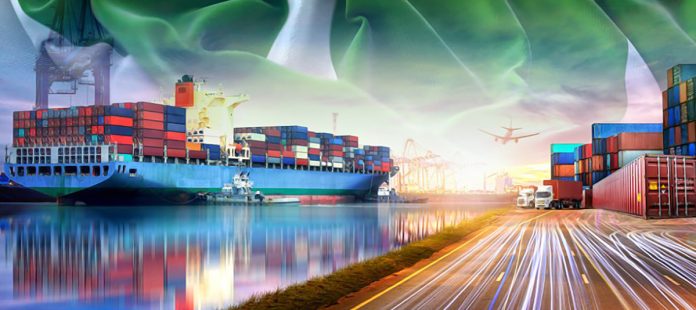Musavir Hameed Barech
Pakistan has long pursued an import-based economic model, relying heavily on importing goods and services from other countries to meet its domestic consumption and production needs. This resulted in persistent trade deficits. The import expenditures exceeded export revenues, straining the balance of payments, impacting currency stability, and causing indebtedness.
The country has by far the lowest export-to-GDP ratio of nine percent among the emerging economies. It, therefore, could not attract much export-oriented foreign direct investment (FDI). Moreover, its major exports remain concentrated within the textile sector (around 60% of total exports) and confined to a few major destinations, such as the USA, EU, UK, and China, which together account for almost 60% of exports.
Amid the global tensions, Pakistan’s excessive dependence on imports, particularly food items and crude oil, has made it vulnerable to external shocks such as changes in global supply chains, geopolitical tensions, and disruptions in trade relations. Such vulnerabilities have negatively impacted industrial productivity and overall economic growth.
Global rivalries and climate change have compounded the difficulties. The abrupt seasonal variations and a cycle of floods and droughts have badly affected agriculture, resulting in Pakistan having to import cooking oil, pulses, and wheat to cater to the growing needs of its population.
Pakistan faced a significant setback due to a natural calamity that caused extensive damage, resulted in losses amounting to approximately $31 billion in loss and damage, and required an additional $15 billion for reconstruction. To compensate for this cost, Pakistan put forward the Resilience, Rehabilitation, Recovery, and Reconstruction Framework (4RF) and successfully got the $9 billion from international community in the form of loans and grants
This economic plan is built around the Export, E-Pakistan, Environment & Climate Change, Energy & Infrastructure, and Equity & Empowerment. 5Es Framework, which conforms to the Vision 2025 and puts boosting exports atop it, given its importance vis à-vis the challenges of economic downturn, high population growth rate, yawning trade gap, and unemployment.
In order to drive economic expansion and revive economic activity, the export-led growth model promotes and prioritizes the production and export of goods and services to international markets, encouraging businesses and industry to strive for a competitive edge.
The country can earn foreign exchange to finance imports, repay foreign debt, and invest in development projects. Foreign exchange earnings also contribute to stabilizing the balance of payments and maintaining currency stability. Engaging in international trade exposes domestic firms to global competition and knowledge spillovers, which can drive technological upgrading and innovation.
This, in turn, enhances productivity and competitiveness, fostering long-term economic growth. The export-led economic model will primarily contribute to tackling the long-term boom-and-bust cycles by mitigating the foreign currency liquidity conundrum and preserving the economy’s competitiveness by emphasizing efficiency enhancement, market diversification, and product diversification.
Export-oriented industries often have higher labor intensity, leading to increased job creation and reduced unemployment rates. This can contribute to poverty reduction and socioeconomic development. In order to promote exports, the government has launched a number of initiatives. To begin with the 5Es Framework, the government is steering a major transition in the national strategy for economic growth. This innovative framework, known as the 5Es strategy, prioritizes boosting exports over the other four Es.
Further, Pakistan has devised a National Productivity Master Plan in collaboration with the Asian Productivity Organization (APO) and the Korean Development Institute (KDI) to enhance productivity. To diversify the market, Pakistan has signed trade agreements with the Central Asian Republics (CARS) and the Gulf Cooperation Council (GCC) countries, as well as established a border market with Iran to improve intra-regional trade.
Recognizing China as Pakistan’s largest trade partner, the government is actively engaging with the Chinese government to strengthen exports. While China’s imports with the world amount to approximately 3 trillion dollars, imports from Pakistan are currently around 3 billion dollars. To address this disparity, the government can work to identify potential products for the Chinese market, improve trade infrastructure, and negotiate favorable trade agreements.
In summary, Pakistan, facing numerous challenges such as low economic growth, a balance of payments crisis, currency depreciations, significant debt servicing, and low industrialization, urgently needs to implement the export lead model. Increasing exports can mitigate the mentioned challenges and set Pakistan on a trajectory of growth and prosperity.
The author is a Research Officer at Balochistan Think Tank Network and can be reached out at musavirkhan88@gmail.com.







